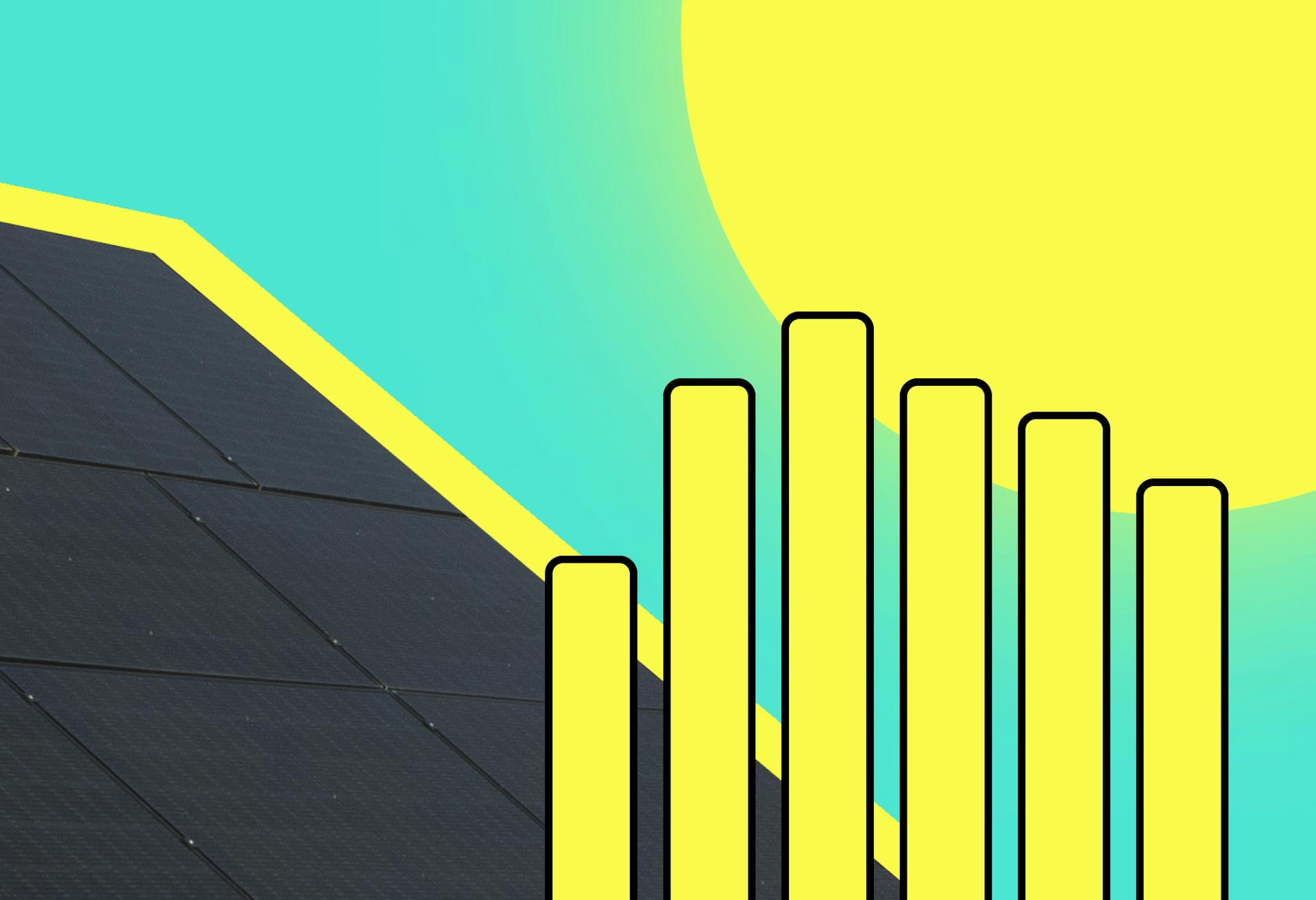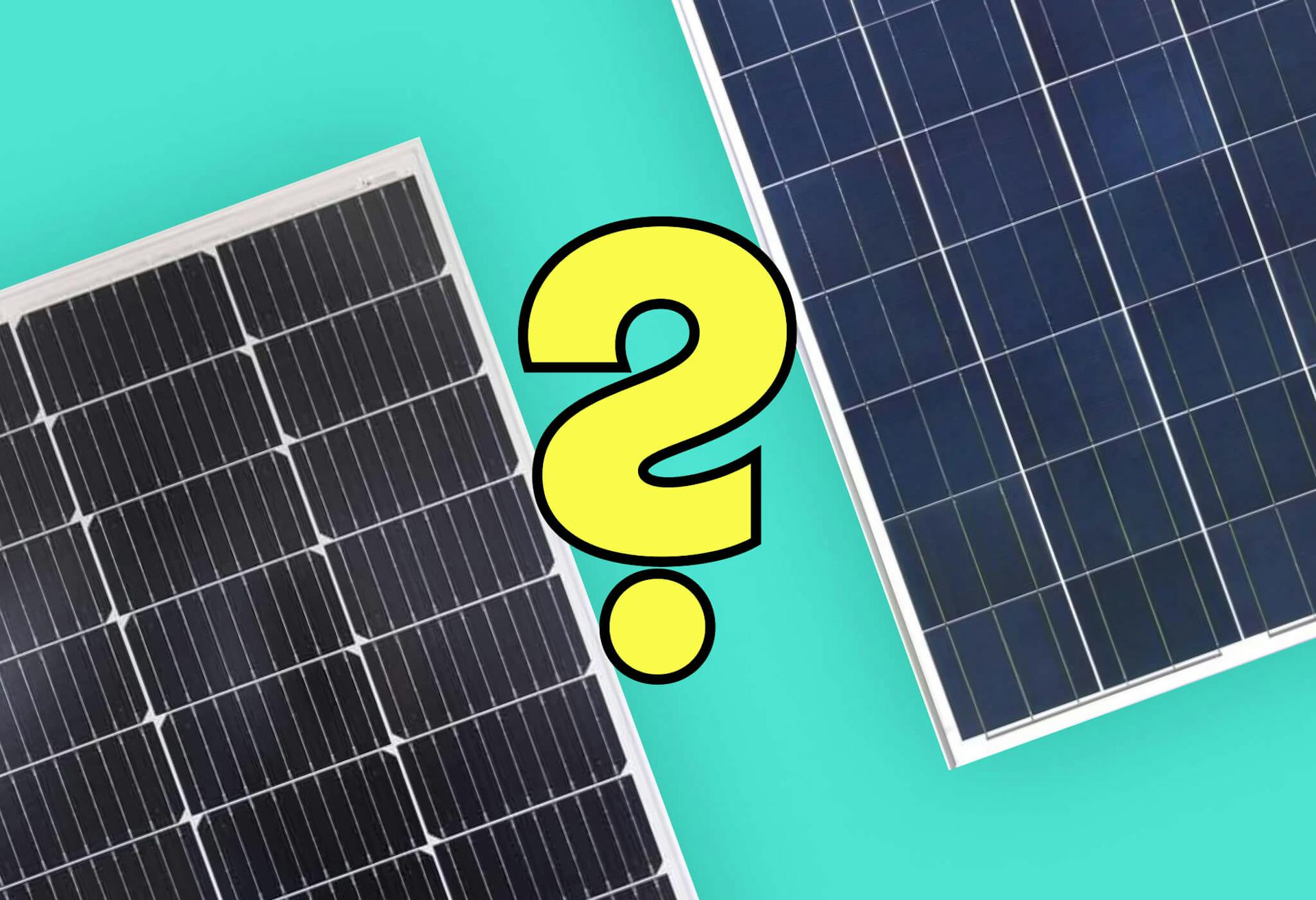- Solar advice hub
- Solar-technology
- How quickly are solar panels improving?
How quickly are solar panels improving?
Discover how far solar panels have come in terms of power, efficiency and durability - and what the future holds.


Why you can trust our content
We know that the solar industry is full of misinformation, but we only use reliable sources, including:
- Our experienced solar experts, installers and system designers
- Our own database of solar & battery system designs
- Authoritative bodies like MCS and the UK government




At a glance
Whenever you invest in your home and future, you want to get the timing right.
That’s why it’s a great idea to consider how rapidly solar panel and battery technology is developing, so you can buy the best products possible.
In this guide, we’ll run through the ways in which the efficiency, durability, power, and aesthetic appearance of solar panels have improved over time, and how far they have to go.
If you’re interested in how much you could save with a solar & battery system, enter a few details below, and we’ll generate a quick estimate.
How much has solar panel technology improved?
Solar panel technology is nearly unrecognisable from its origins in the late 19th century.
Researchers and manufacturers have made advancements in multiple fields to create the powerful, durable, sleek, high-efficiency panels we have today.
Let's dig into the specifics.
Efficiency
Scientists and manufacturers have increased the efficiency of solar panels exponentially since American inventor Charles Fritts created the first ever solar cells in 1883.
His creations, made by covering a semi-metallic element called selenium with a thin layer of gold and placed on a New York City rooftop, were 1-2% efficient.
In 1954, researchers at Bell Labs in New Jersey made the first commercially viable solar cell with silicon, laying the groundwork for modern solar panel systems.
That cell, which had an efficiency of around 6%, showed off its capabilities by powering a toy Ferris wheel and a radio transmitter.
Californian company Hoffman Electronics made a solar cell with 14% efficiency in 1960, and the race was on.
The 20% mark was passed in 1985 by scientists at the University of New South Wales, then in 1989, aerospace company Boeing surpassed 30% for the first time with a multijunction cell.
It took a bit longer to reach 40% efficiency, but in 2006, Californian company Spectrolab finally managed it.
The record high for solar cell efficiency now lies with the Fraunhofer Institute for Solar Energy Systems in Freiburg, Germany, where researchers made it to 47.6% in 2022.
However, it’s difficult to turn this progress with solar cells in laboratory conditions into solar panels with the same levels of efficiency.
The most efficient solar panels on the market at the moment are LONGi's Hi-MO X10 Scientist and JinkoSolar's Tiger Neo 3.0, which are both 24.8% efficient.
How much will solar panel efficiency improve?
Solar panel efficiency rates are expected to improve extremely slowly, as companies make marginal gains each year or two.
There’s also a ceiling on the growth of most panels, as the theoretical efficiency limit of single-layered solar panels – which describes all modern solar panels installed on homes – is 33.7%.
Multi-layered panels like the perovskite-silicon tandem panel have the potential to raise the bar for solar efficiency, but they’re still mired in development and are facing significant stability issues.
UK-based company Oxford PV broke the efficiency record for a perovskite-silicon panel in June 2024, hitting 26.9%, which is encouraging.
And also in June 2024, Chinese solar manufacturer LONGi announced that it'd achieved 34.6% efficiency with a single perovskite-silicon cell.
However, it’ll be many years – or decades, even – before these panels are widely available for domestic properties, and even longer until they’re affordable.
Durability
Solar panels have been extremely durable for several decades at this point.
A series of panels at Oldenburg University in Germany have generated solar electricity ever since they were switched on in 1976, and after being moved to the institution’s Energielabor building in 1981.
A representative from the university told us: “Most of the photovoltaic modules installed at the Energielabor in 1981 are indeed still working; they feed more than 3,000 kilowatt-hours of electricity into the grid per year.”
Considering these 336 solar modules had a power rating of 3.46 kilowatt-peak (kWp) when they were initially set up, this shows remarkable longevity. Between 1976 and 2011, the system’s efficiency rating only dropped from 8.55% to 8.2%.
Not every solar panel will last 50 years, and most will see their power output degrade as they age. You can expect the average panel to produce 87% of its original output after 30 years, according to our calculations.
The best monocrystalline panels will likely generate substantial amounts of electricity for around four decades, with some manufacturers already offering performance warranties guaranteeing your panels will produce 88% of their initial output after 40 years.

How much will solar panel durability improve?
Solar panels don’t need to become much more durable, considering the top models can already last about 40 years at a high level.
And that’s just an educated, possibly overly cautious prediction.
Solar panels of this quality only started being installed on domestic properties in the late 2010s, so there’ll be no definitive way of knowing their effective lifespan until the 2050s, at the earliest.
Power
Solar power ratings have come a long way.
In 1966, NASA launched its Orbiting Astronomical Observatory satellite into space with 53,000 solar cells and a peak power rating of just 0.7kWp, according to its report.
And let’s not forget that the NASA array was operating in space, where solar technology is significantly more effective.
Nowadays, a domestic system on Earth could easily reach that peak power rating with two solar panels that contain less than 200 solar cells between them (i.e. 52,800 fewer cells than NASA needed around 60 years ago).
NASA’s array also took up 17.4m². The same area on a modern rooftop could fit a system with a power rating of 3.9kWp – more than five times the capacity of NASA’s array.
The average solar panel’s watts per m² have come on leaps and bounds since the 1960s, and even between 2006 and 2018, when it rose from 141W/m² to 192W/m².
However, since then, development has stagnated around 200W/m², leading many manufacturers to discard the standard size used for many years and simply make larger panels.
This allows them to tell customers that their products have peak ratings above 500W or even 600W, without mentioning the fact that these panels are 3m² or larger.
So remember, when you’re looking at solar panels: the key metric isn’t the power rating; it’s watts per m².
Powerful panels with 200W/m² ratings are at least within reach of the average household now, unlike in 1955, when Hoffman Electronics sold a solar cell that cost £16,175 per watt in today’s money.
Hoffmann Electronics would have gladly sold you enough solar cells in 1955 to cover your roof with a 5.2kWp system – but you would’ve needed a gigantic, very sturdy roof, and it would’ve cost you £84.1 million.
Thankfully, the cost of solar panels has plummeted since then, and you can now buy the same system for around £10,000, on average – or with no upfront cost, if you use Sunsave Plus.
If you’re wondering how much a Sunsave Plus solar & battery system could save you, just answer a few quick questions below and we'll generate an estimate for you.
How much will solar panel power improve?
With the level of watts per m² remaining stable around 200W/m², solar panel manufacturers will keep producing panels with higher power ratings – but they’ll also be physically larger.
That’s not a meaningful advancement for households, who have to make the most of the limited space available on their rooftops.
As efficiency levels slowly rise over the coming years, the average panel’s watts per m² will too – but this increase won’t be significant enough that you should wait to get solar.
To learn more, check out our guide to solar panel sizes and dimensions.
Aesthetics
When it comes to appearance, there’s no comparison between past panels and current models.
For much of the 1970s and 80s, customers could only buy beige panels with large blue polycrystalline circles that looked like polka dots.
Panels composed of blue, polycrystalline material then became the norm until the early 2000s, when black, monocrystalline panels began to take over.
At this point, installers use black solar panels in the majority of new installations – and in recent years, all-black panels (complete with black busbars) have become the most popular variety.
There are also new types of solar panels that provide other options for the aesthetically minded customer.
You can get solar tiles, which replace all your roof tiles – but are 50% more expensive than regular panels – or roof-integrated panels, which cost about 10% more and require you to get rid of a section of your roof.
Alternatively, you could get transparent or thin-film solar panels, which are less conspicuous – but also less efficient, less powerful, and less durable.
How much will solar panel aesthetics improve?
Considering you can already purchase all-black solar panels, there isn’t much room for them to improve while remaining at their current efficiency level.
However, there is some movement in the market towards more variety when it comes to the colour of your panels.
Red, green, and purple panels are already available to domestic customers, though none of these models come with particularly high efficiency ratings.
Solar tiles could also be made to look even more similar to traditional roof tiles, but they already cost considerably more than solar panels, and any aesthetic improvements would raise this price even higher.
And as solar rooftop technology becomes an increasingly common site on UK homes, customers are likely to worry less about their tiles looking different.
Summary
Solar panels have gone from being an eccentric curiosity to a crucial tool in the fight against rising electricity bills and climate change.
Domestic panels probably haven’t yet reached their final form, but they're already so advanced in terms of power, efficiency, and aesthetics that any further gains would be far from essential.
It’s therefore worth investing in a solar & battery system now, so you can start saving straight away – a prospect that’s even better with Sunsave Plus, which comes with no upfront cost.
If you would like to see the savings you could get from a solar & battery system, just answer a few quick questions below, and we’ll provide an estimate.
FAQs
Related articles

How efficient are solar panels?
Read full story
The 6 different types of solar panels
Read full story
Perovskite solar panels: an expert guide
Read full story
The top 19 solar energy statistics
Read full story
Written byJosh Jackman
Josh has written about the rapid rise of home solar for the past six years. His data-driven work has been featured in United Nations and World Health Organisation documents, as well as publications including The Eco Experts, Financial Times, The Independent, The Telegraph, The Times, and The Sun. Josh has also been interviewed as a renewables expert on BBC One’s Rip-Off Britain, ITV1’s Tonight show, and BBC Radio 4 and 5.